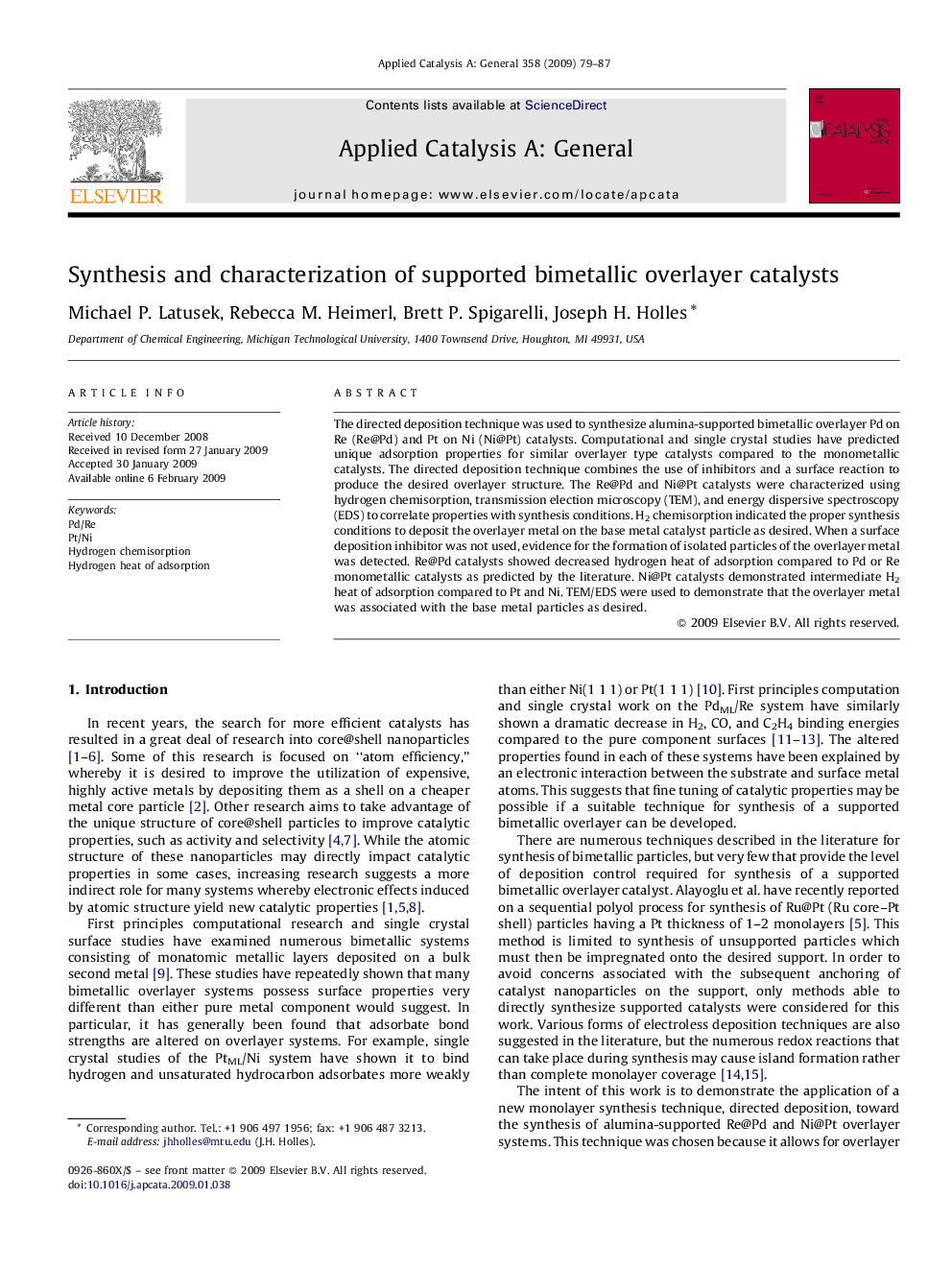| Article ID | Journal | Published Year | Pages | File Type |
|---|---|---|---|---|
| 42931 | Applied Catalysis A: General | 2009 | 9 Pages |
The directed deposition technique was used to synthesize alumina-supported bimetallic overlayer Pd on Re (Re@Pd) and Pt on Ni (Ni@Pt) catalysts. Computational and single crystal studies have predicted unique adsorption properties for similar overlayer type catalysts compared to the monometallic catalysts. The directed deposition technique combines the use of inhibitors and a surface reaction to produce the desired overlayer structure. The Re@Pd and Ni@Pt catalysts were characterized using hydrogen chemisorption, transmission election microscopy (TEM), and energy dispersive spectroscopy (EDS) to correlate properties with synthesis conditions. H2 chemisorption indicated the proper synthesis conditions to deposit the overlayer metal on the base metal catalyst particle as desired. When a surface deposition inhibitor was not used, evidence for the formation of isolated particles of the overlayer metal was detected. Re@Pd catalysts showed decreased hydrogen heat of adsorption compared to Pd or Re monometallic catalysts as predicted by the literature. Ni@Pt catalysts demonstrated intermediate H2 heat of adsorption compared to Pt and Ni. TEM/EDS were used to demonstrate that the overlayer metal was associated with the base metal particles as desired.
Graphical abstractDirected deposition was used to synthesize alumina-supported bimetallic overlayer Pd on Re (Re@Pd) and Pt on Ni (Ni@Pt) catalysts. The directed deposition technique combines the use of inhibitors and a surface reaction to produce the desired overlayer structure. Re@Pd catalysts showed decreased hydrogen heat of adsorption compared to Pd or Re monometallic catalysts as predicted by computational studies.Figure optionsDownload full-size imageDownload as PowerPoint slide
